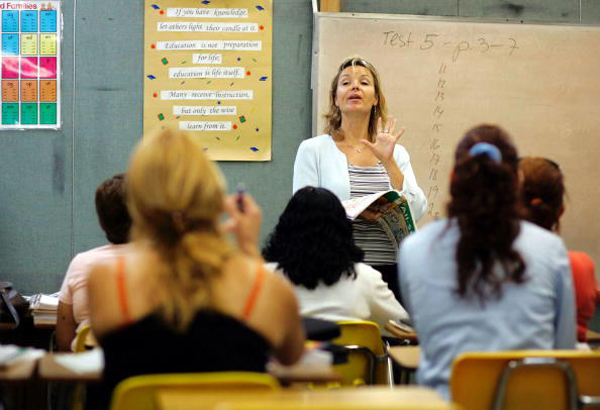- National Library Week in Los Fresnos
- Lady Falcons are Class 6A Champions
- New Beauty Clinic Opens Up in Los Fresnos
- “Houston’s Most Notable” —Los Fresnos Raised
- Earth Day 2024 coming April 6th in Los Fresnos
- Another Successful Golf Tournament for the Leo Aguilar Foundation
- Back to The Moon Again
- March 2024 Your Health Matters
- Lady Falcons in Tournament Play
- Easter Fun at Big Red’s Ranch
Study Examines Effect of Funding Cuts on Texas Schools, Students
- Updated: October 13, 2017

A new study examines the effects that a $5 billion funding cut had on Texas school districts and their students over a five-year period. Photo: Raedle/GettyImages
by Mark Richardson
AUSTIN, Texas – Funding cuts by state lawmakers left a five-year, $5 billion hole in the budget for Texas public schools between 2011 and 2016.
A new University of Texas study analyzes the effect of those cuts, made because of state revenue shortfalls, which forced many districts to operate with less money despite a growing number of students.
Michael Marder, a professor and co-author of the study at the UTeach Institute at UT, says although state spending is beginning to rebound, there is still a need to deal with the problems caused by the cuts.
“Even if funding returns to previous levels, a five-year period where it was underfunded leaves not just a five-year hole in the budget but a five-year hole in what students learned,” he stresses. “So, they are going to be coming to the system having learned less than they might have otherwise.”
Marder says during that five-year period, the report shows that many districts were forced to cut class size, hire fewer teachers and limit non-core programs such as art, music and computer science.
He says properly funded school districts are better able to attract and retain high quality teachers and provide a wider variety of courses.
Marder points out the research shows that as the state begins to restore funding, the money is not always returned to the same programs to serve the same students.
“Accelerated instruction, which is for students who are struggling and need extra help, went down, particularly in schools with a lot of low-income students,” he explains. “Funding in the schools serving the lowest income students for bilingual education went down by as much as 40 percent.”
Marder says restoring the funding does not always deal with the problems created by the five-year “funding hole.”
“The neediest students may still not be receiving the same level of support they did previously, and I think this is a matter of concern to every citizen of Texas who cares about fellow citizens and the future of the state,” he states.
Marder says the study is the first of its kind to analyze the academic and practical effects of budget cuts on students in Texas school districts.





